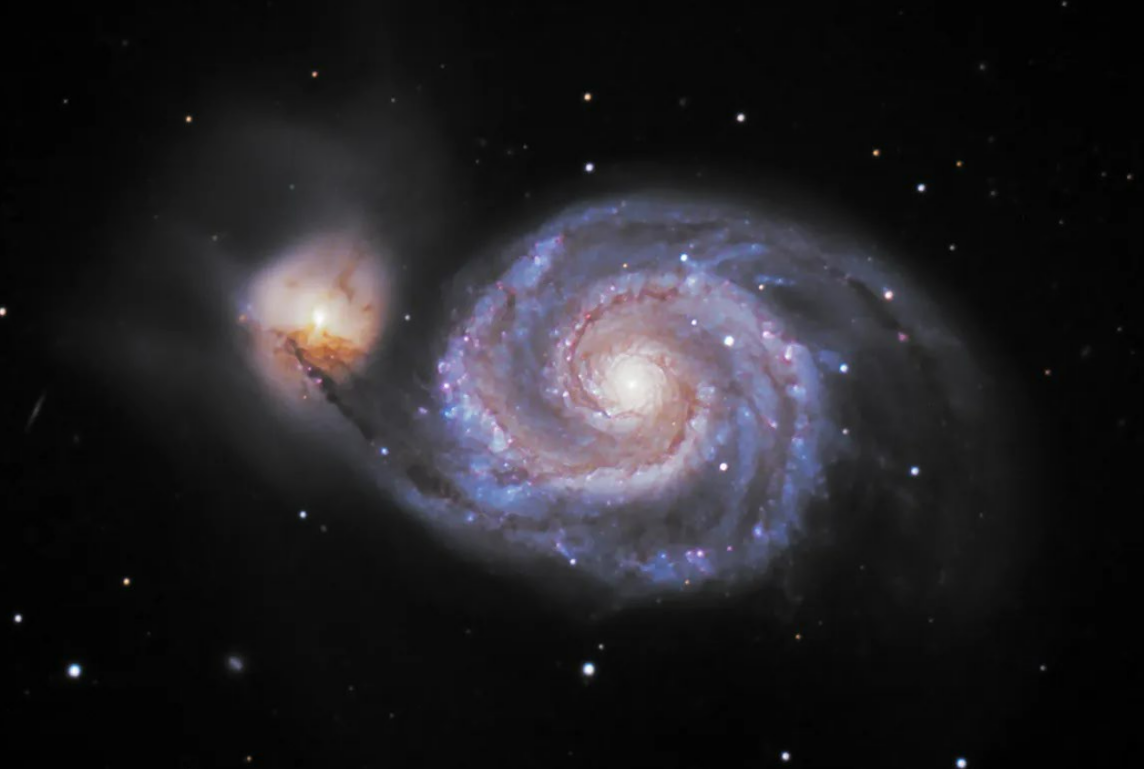

What's Up? May 2024
Time again for our monthly What’s Up! It’s May, and days are getting light now, so we’re having to stay up quite late to get astronomical darkness. Still, there’s lots of objects and constellations to see! It’s well and truly galaxy season now, so if you love huge islands of stars of many different shapes and sizes, this is the month for you!
Galaxies
It’s galaxy season! At this time of year, the UK gets many incredible galaxies in view due to the location of the Earth in its orbit around the sun. You’ll need a small telescope to view most of these as they are not visible to the naked eye. Here are a few of our favourites to see at the observatory!
M81 and M82
These two galaxies can be found in the constellation of Ursa Major – the Great Bear. This is an easy constellation to spot because part of it makes a saucepan shape in the sky, otherwise known as the plough or the big dipper. You can use this constellation to find M81 and M82 which are just to the top right, like you can see in the diagram below.

Image: Ursa Major, showing where M81 and M82 can be found. Credit: Stellarium
M81 and M82 are neighbours of the galactic kind. They are very close to each other and therefore gravitationally bound. Both sit at about 12 million light years away from us! M81 is known as the Bode’s galaxy because it was discovered by astronomer Johann Bode. It is very luminous and has a beautiful great spiral structure. M82 is a starburst galaxy and due to its elongated shape is known as the Cigar galaxy. Starburst means there are lots of stars being born at a fast pace, much more than the usual rate of star formation. Scientists think the massive number of new stars being born is due to the gravitational interactions with close-by neighbour Bode’s.
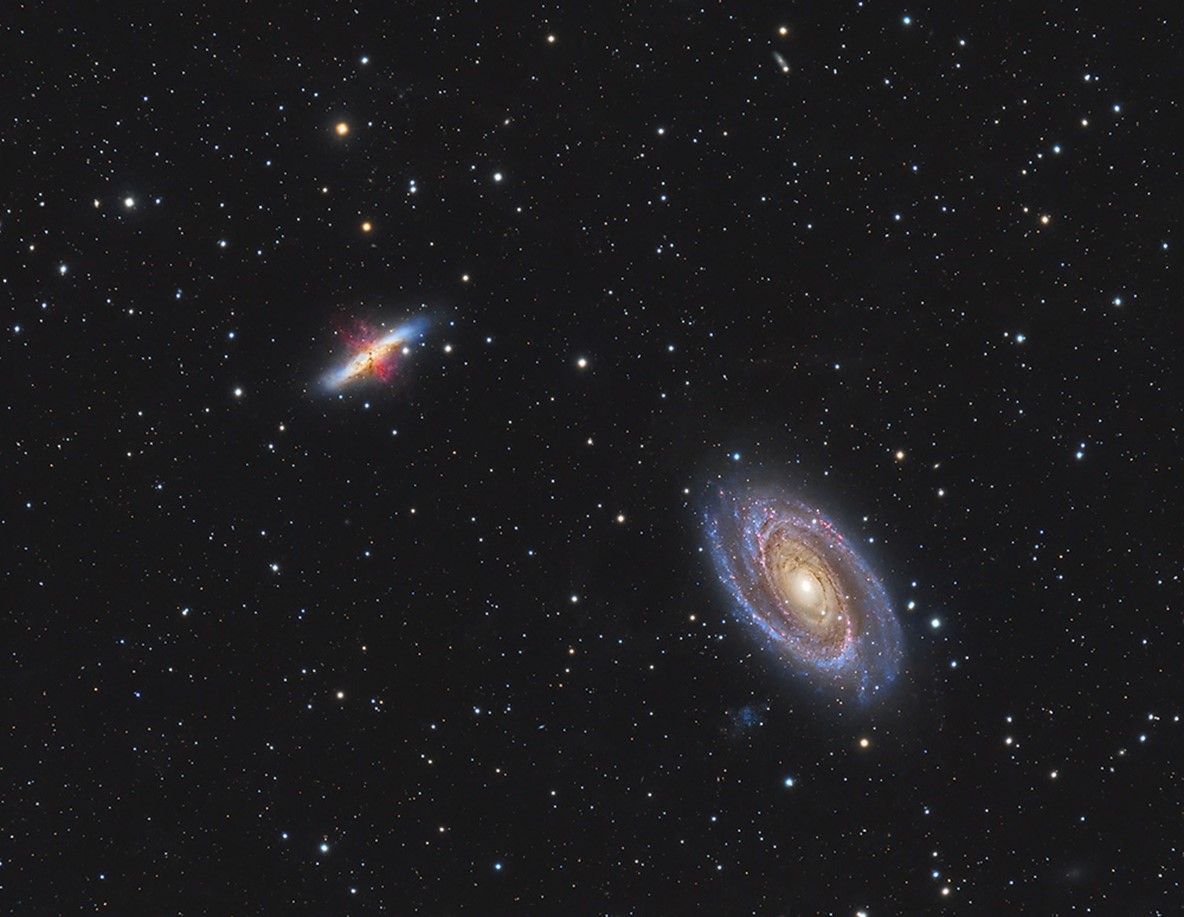
Image: Cigar galaxy left (M82), Bode galaxy right (M81). Credit: Sky and Telescope
Leo triplet
The Leo triplet is a trio of galaxies that can be found in the constellation of Leo the Lion. They are all located about 30 million light years away. The three galaxies are M66, M65 and NGC 3628 (also known as the Hamburger galaxy because of it’s shape due to it being edge on!). They are all spiral galaxies and due to their close proximity have a gravitational effect on one another.
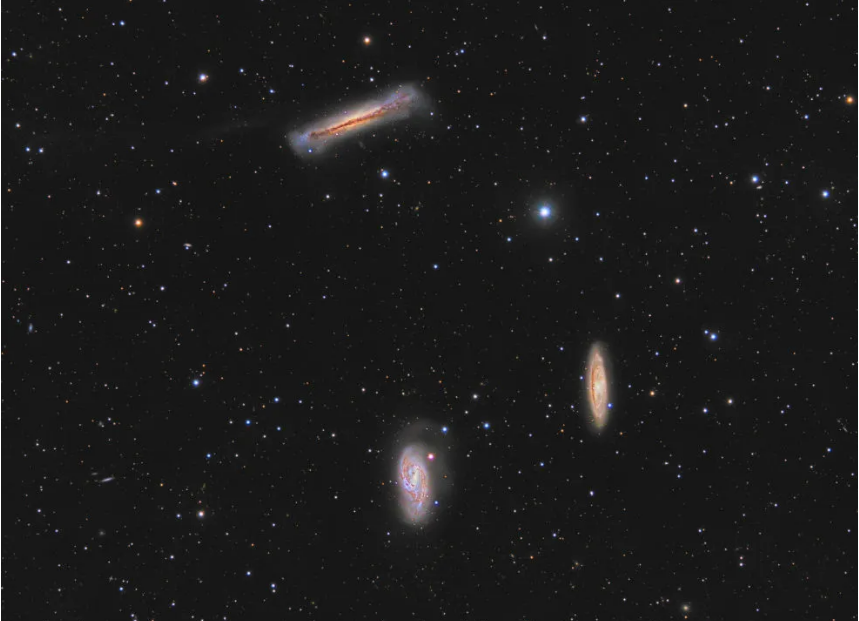
Image: The Leo Triplet, Credit: Mukund Raguram, The Sky at Night Magazine
Whirlpool M51

Image: The Whirlpool galaxy, Credit: Steve Porter, The Sky at Night Magazine
Our final object on our galaxy list, though there are many, many more to choose from, is the Whirlpool galaxy. So called due to looking very much like a whirlpool as you can see in the picture above. This is a very beautiful face-on spiral galaxy, and perhaps the most photographed galaxy in the world (or at least top 3).
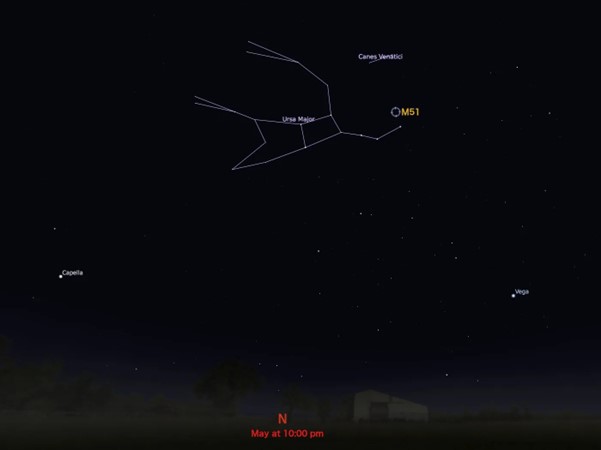
Credit: NASA, Stellarium
The Whirlpool Galaxy is 31 million lightyears from Earth in the constellation Canes Venatici and is observable through a small telescope. It’s very recognisable because it’s completely face-on to us revealing the striking spiral structure, but also because it looks like it’s currently mid meal, eating up another galaxy. This is NGC 5195, a yellowish dwarf galaxy which is interacting with the Whirlpool at the very tip of one if it’s arms. From images by the Hubble Space Telescope, we know that NGC 5195 is slowly passing behind the Whirlpool.
Eta Aquarids Meteor Shower
On May the 6th there is the peak of the Eta Aquarids Meteor Shower. This is a shower that is mostly seen in the Southern Hemisphere, but a few shooting stars will be visible from the UK. At it’s peak it will hopefully reach around 20/30 meteors per hour. The shower is produced by debris from the Comet Halley as it orbits round the Sun and the Earth passes through the particles of dust and ice annually.
Although slightly more difficult to see than countries further south, the good news is the peak lands on a nearly new moon this year, which means the skies should be nice and dark. To try and spot them go to a dark (and clear!) location with little light pollution and look towards the eastern horizon. Meteors will radiate from the constellation Aquarius, which doesn’t rise until around 3am. If you want a good chance to see them grab a cup of coffee and keep a lookout from about midnight onwards.
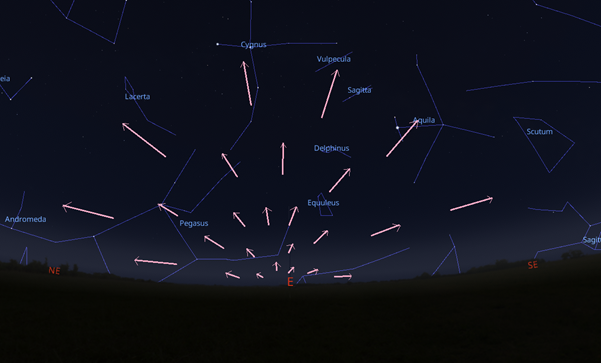
Image: Meteor shower radiant point, Credit: Royal Museums Greenwich, Stellarium
Our Solar System
The planets are relatively shy this month, unless you want to get up very early in the morning. Saturn is making an appearance around 3am towards the end of May in the Constellation Aquarius.
The planet Mercury reaches greatest western elongation on the 9th of May. This is the best time to view Mercury since it will be at its highest point above the horizon in the morning sky. Look for the planet low in the eastern sky just before sunrise.
Moon Phases
· May 1st - Last Quarter
· May 8th – New Moon
· May 15th – First Quarter
· May 23rd – Full Moon
· May 30th – Last Quarter














